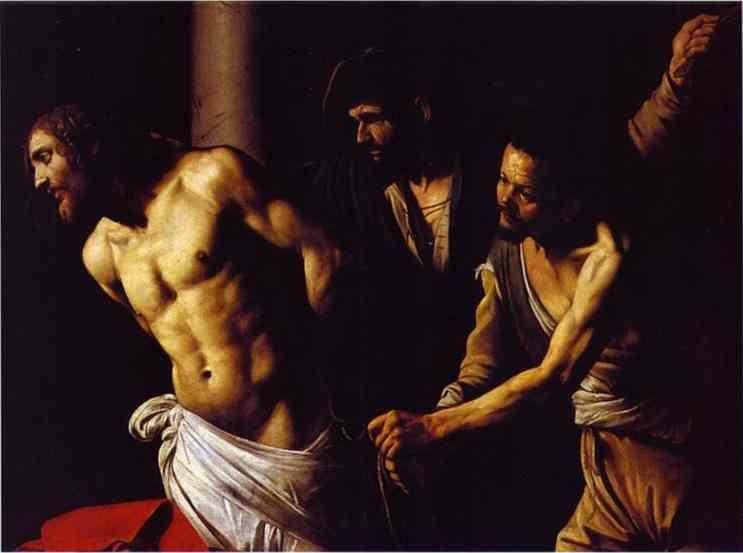Ο Χριστός στις Τέχνες

Caravaggio was an Italian baroque painter who was the best exemplar of naturalistic painting in the early 17th century. His use of models from the lower classes of society in his early secular works and later religious compositions appealed to the Counter Reformation taste for realism, simplicity, and piety in art. Equally important is his introduction of dramatic light-and-dark effects—termed chiaroscuro—into his works.
Originally named Michelangelo Merisi, Caravaggio was born September 28, 1573, in the Lombardy hill town of Caravaggio, from which his professional name is derived. He may have spent four years as apprentice to Simone Peterzano in Milan before going to Rome in 1593, where he entered the employ of the Mannerist painter Giuseppe Cesari, also known as the Cavaliere d'Arpino, for whom he executed fruit and flower pieces (now lost). Among his best-known early works are genre paintings (scenes from everyday life) with young men—for example, The Musicians (1591?-1592, Metropolitan Museum, New York City)—which were done for his first important patron, Cardinal Francesco del Monte. Scenes such as the Fortune Teller (1594, versions in the Louvre, Paris, and the Museo Capitolino, Rome) were especially appealing to the artist's followers.
Ο Χριστός στις Τέχνες
Το Πρόσωπο του Χριστού
Το Πρόσωπο του Χριστού
Flagellation of Christ. c.1606-1607.
Oil on canvas. Musée des Beaux-Arts, Rouen, France.
Oil on canvas. Musée des Beaux-Arts, Rouen, France.
Caravaggio
(Michelangelo Merisi)
(1573-1610)
(Michelangelo Merisi)
(1573-1610)
Caravaggio was an Italian baroque painter who was the best exemplar of naturalistic painting in the early 17th century. His use of models from the lower classes of society in his early secular works and later religious compositions appealed to the Counter Reformation taste for realism, simplicity, and piety in art. Equally important is his introduction of dramatic light-and-dark effects—termed chiaroscuro—into his works.
Originally named Michelangelo Merisi, Caravaggio was born September 28, 1573, in the Lombardy hill town of Caravaggio, from which his professional name is derived. He may have spent four years as apprentice to Simone Peterzano in Milan before going to Rome in 1593, where he entered the employ of the Mannerist painter Giuseppe Cesari, also known as the Cavaliere d'Arpino, for whom he executed fruit and flower pieces (now lost). Among his best-known early works are genre paintings (scenes from everyday life) with young men—for example, The Musicians (1591?-1592, Metropolitan Museum, New York City)—which were done for his first important patron, Cardinal Francesco del Monte. Scenes such as the Fortune Teller (1594, versions in the Louvre, Paris, and the Museo Capitolino, Rome) were especially appealing to the artist's followers.











Comment